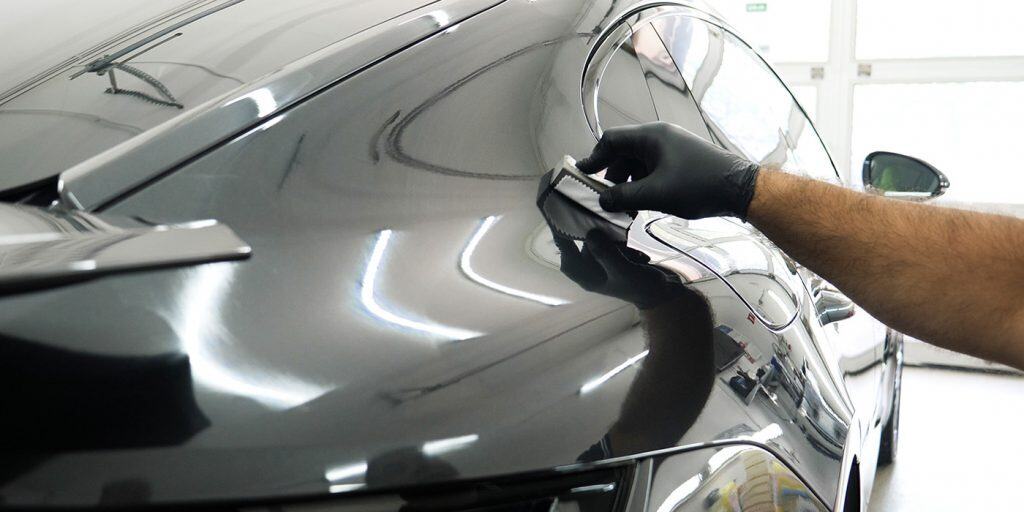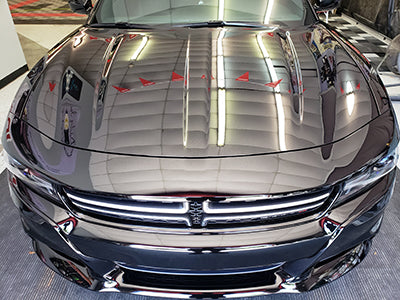Ceramic Layer vs. Traditional Wax: Which Provides Much Better Long-Term Protection?
The discussion between ceramic finishes and conventional wax for car protection has actually gathered substantial attention amongst automobile fanatics and professionals alike. Ceramic finishes flaunt exceptional durability and resistance to environmental factors, yet the complexity of their application elevates inquiries regarding ease of access and functionality.
Overview of Ceramic Finish
Ceramic covering has obtained substantial popularity amongst automotive enthusiasts and detailers alike because of its innovative protective high qualities. This innovative technology is made to develop a long lasting, hydrophobic shield over an automobile's paint surface area, considerably boosting its resistance to environmental impurities such as dirt, UV rays, and chemical spots. Unlike typical wax, which offers a short-lived layer of security, ceramic coatings bond at a molecular level with the paint, supplying long-lasting sturdiness-- commonly expanding past two years with appropriate maintenance.
The application process includes careful preparation of the car's surface area, including cleaning and polishing to make certain ideal attachment. When applied, the finishing remedies to create a robust layer that not just adds depth and gloss to the paint yet additionally streamlines upkeep. With its hydrophobic homes, ceramic finish allows water and dust to move off more easily, reducing the frequency of cleans and reducing the danger of swirl marks.
Moreover, ceramic coverings are offered in various formulations, allowing customers to pick items tailored to their specific demands and choices. In general, ceramic covering represents a considerable development in paint defense innovation, supplying exceptional performance compared to conventional alternatives.
Overview of Conventional Wax
Traditionally related to as a staple in vehicle treatment, wax works as a preferred option for those seeking a straightforward approach to boost and secure their car's paint - ceramic coating. Automotive wax generally comprises all-natural components, such as carnauba, or synthetic substances, created to create a safety layer externally of the paint. This layer not only boosts the car's gloss and beam but likewise provides an obstacle against ecological pollutants
The application of wax is typically user-friendly, making it obtainable for both specialists and DIY enthusiasts. It can be used by hand or machine, allowing for convenience in the outlining process. When applied, wax calls for a healing duration, after which it solidifies to form a protective covering. Wax is likewise understood for its ability to ward off water, promoting a beading result that aids in the avoidance of water spots and rust.
Nonetheless, while wax works for improving the visual appeal of a car, it is essential to note that the protection it uses might demand much more regular reapplication contrasted to different products, such as ceramic finishings. On the whole, traditional wax remains a preferred choice for those focusing on convenience of use and immediate visual enhancement.
Longevity and Longevity Comparison
While both ceramic finishes and typical wax deal protective benefits for automobile paint, their sturdiness and long life differ significantly. Standard wax, commonly made from all-natural carnauba or artificial polymers, usually provides a protective layer that lasts approximately 3 to six months. This fairly short life-span necessitates normal reapplication to keep optimal protection.
On the other hand, ceramic coatings are engineered from sophisticated nanotechnology, developing a covalent bond with the paint surface area. This leads to a durable, hydrophobic layer that can withstand for two to five years, depending on the item and ecological problems. The remarkable toughness of ceramic coatings is credited to their chemical structure, which offers boosted resistance to scrapes, UV rays, and oxidation.

Security Versus Environmental Variables
Securing a vehicle's paint from environmental variables is vital for maintaining its appearance and worth over time. Cars are constantly subjected to a range of aspects, consisting of UV rays, bird droppings, navigate to this site tree sap, acid rain, and roadway grime, every one of which can endanger the integrity of the paintwork.
Ceramic finishes provide a robust defense versus these ecological aggressors. Unlike conventional wax, which can weaken quickly under UV exposure, ceramic finishes create a durable, hydrophobic layer that withstands the unsafe effects of sunlight and toxic wastes. This advanced innovation develops a chemical bond with the vehicle's surface, supplying superior protection that lasts for years, even in rough conditions.
Traditional wax, while less complicated to use, normally requires regular reapplication and supplies limited resistance to pollutants and UV rays. Gradually, it can damage down, leaving the paint prone to scratches and oxidation. On the other hand, ceramic coverings preserve their protective qualities much longer, substantially decreasing the danger of paint damage and ensuring that the car preserves its aesthetic charm. Consequently, ceramic finishes are significantly acknowledged as the superior option for long-term protection versus ecological elements.
Application and Maintenance Differences
The approaches of application and subsequent upkeep for ceramic finishings and traditional wax differ dramatically, affecting the total user experience and performance of each product. Ceramic layers require an even more elaborate application procedure, generally entailing surface prep work that includes cleaning, decontaminating, and brightening the car. Once the surface area is ready, the ceramic layer is applied in a regulated environment, usually needing expert proficiency to make certain proper treating and bonding to the paint.

While both products enhance car appearance, the longer-lasting security used by try here ceramic layers may justify their preliminary financial investment, regardless of the even more demanding application process. Alternatively, typical wax remains a prominent choice for those looking for an easier, albeit temporary, solution.

Conclusion
In verdict, ceramic layers demonstrate considerable advantages over conventional wax in terms of sturdiness and ecological security. With a life-span prolonging two to five years and exceptional resistance to UV rays, dirt, and chemical stains, ceramic finishings use a much more efficient remedy for long-term lorry maintenance. Although the application process may require expert experience, the resulting expense savings and minimized regularity of reapplication underscore the worth of ceramic finishings for those looking for optimum automobile protection.
The dispute between ceramic coatings and traditional wax for car defense has garnered significant interest amongst auto enthusiasts and experts alike. Unlike conventional wax, which provides a momentary layer of protection, ceramic finishes bond at a molecular level with the paint, using long-lasting longevity-- typically extending beyond 2 years with proper maintenance.
While both ceramic coatings and conventional wax deal protective benefits for auto paint, their resilience and long life vary considerably. For auto enthusiasts looking for lasting protection, ceramic coatings offer a compelling advantage over standard wax items.
In verdict, ceramic coverings show substantial advantages over conventional wax in terms of toughness and ecological protection.